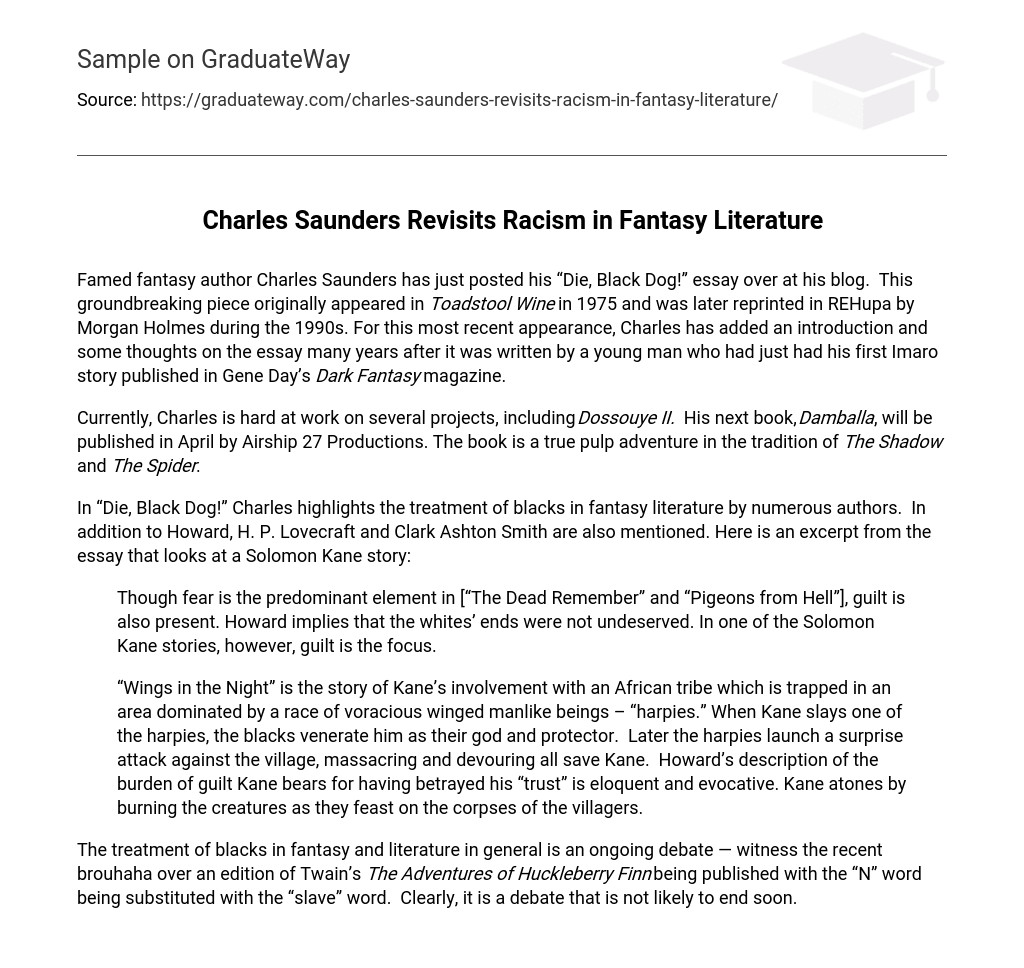Famed fantasy author Charles Saunders has just posted his “Die, Black Dog!” essay over at his blog. This groundbreaking piece originally appeared in Toadstool Wine in 1975 and was later reprinted in REHupa by Morgan Holmes during the 1990s. For this most recent appearance, Charles has added an introduction and some thoughts on the essay many years after it was written by a young man who had just had his first Imaro story published in Gene Day’s Dark Fantasy magazine.
Currently, Charles is hard at work on several projects, including Dossouye II. His next book, Damballa, will be published in April by Airship 27 Productions. The book is a true pulp adventure in the tradition of The Shadow and The Spider.
In “Die, Black Dog!” Charles highlights the treatment of blacks in fantasy literature by numerous authors. In addition to Howard, H. P. Lovecraft and Clark Ashton Smith are also mentioned. Here is an excerpt from the essay that looks at a Solomon Kane story:
Though fear is the predominant element in [“The Dead Remember” and “Pigeons from Hell”], guilt is also present. Howard implies that the whites’ ends were not undeserved. In one of the Solomon Kane stories, however, guilt is the focus.
“Wings in the Night” is the story of Kane’s involvement with an African tribe which is trapped in an area dominated by a race of voracious winged manlike beings – “harpies.” When Kane slays one of the harpies, the blacks venerate him as their god and protector. Later the harpies launch a surprise attack against the village, massacring and devouring all save Kane. Howard’s description of the burden of guilt Kane bears for having betrayed his “trust” is eloquent and evocative. Kane atones by burning the creatures as they feast on the corpses of the villagers.
The treatment of blacks in fantasy and literature in general is an ongoing debate — witness the recent brouhaha over an edition of Twain’s The Adventures of Huckleberry Finn being published with the “N” word being substituted with the “slave” word. Clearly, it is a debate that is not likely to end soon.





